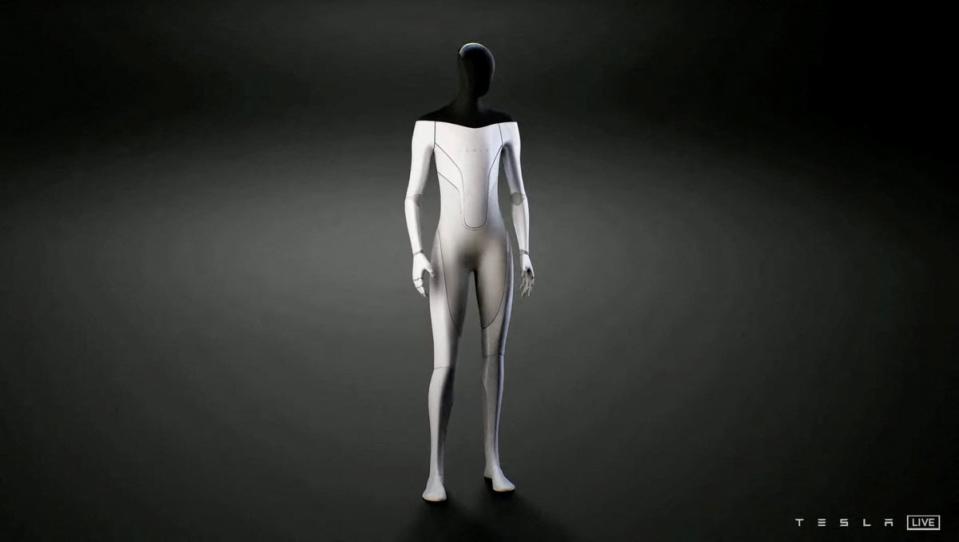Everything we know about Elon Musk’s Tesla robot

When Elon Musk unveils the first AI-powered Tesla robot later this month it will mark a new chapter for the electric vehicle company.
And in fact, the robot, which is known as Optimus, is built with the same sensors and chipsets that are used in Tesla’s wildly popular self-driving automobiles.
When the world’s richest man first introduced the robot concept in 2021, slides presented by the company stated that it would stand five feet eight inches tall, and weigh125 pounds.
Tesla claimed that it would be capable of lifting 150 pounds, carrying 45 pounds, and traveling at five miles per hour. Mr Musk joked that the robot would be designed so that humans were able to run away from it, and overpower it.
Tesla’s Autopilot cameras will be installed in the robot’s head, which will also feature a screen for useful information.
In an essay for China Cyberspace magazine, Mr Musk wrote that Optimus was designed to replace human labour in “repetitive, boring and dangerous tasks.”

“But the vision is for them to serve millions of households, such as cooking, mowing lawns, and caring for the elderly,” he wrote.
“Achieving this goal requires that robots evolve to be smart enough and for us to have the ability to mass produce robots. Our ‘four-wheeled robots’ – cars – have changed the way people travel and even live. One day when we solve the problem of self-driving cars (i.e., real-world artificial intelligence), we will be able to extend artificial intelligence technology to humanoid robots, which will have a much broader application than cars.
“We plan to launch the first prototype of a humanoid robot this year and focus on improving the intelligence of that robot and solving the problem of large-scale production.
“Thereafter, humanoid robots’ usefulness will increase yearly as production scales up and costs fall. In the future, a home robot may be cheaper than a car.
“Perhaps in less than a decade, people will be able to buy a robot for their parents as a birthday gift.”
Mr Musk will reveal the first prototype of the robot at the company’s annual AI Day on 30 September.

 Yahoo Finance
Yahoo Finance 